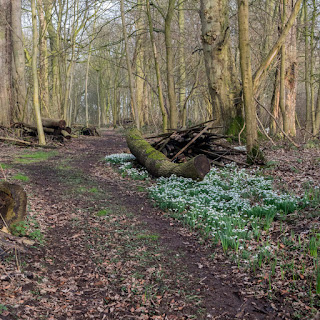Walking
in Woods
Walking allows me to slow down and fully experience and
appreciate the landscape through which I travel; to be a ‘human being’, rather
than a ‘human doing’. It not only provides exercise and improves health;
it nourishes the mind, providing spiritual refreshment through contact with
nature, allowing for the study of the appearance of things. When walking in woodland, it is easy to lose
and find oneself again, to reflect, meditate and absorb the natural world
around; it allows me to reconnect with the world. Woods, especially beech woods are often
likened to cathedrals, which are also places of calm and contemplation.
Footpaths disappearing into the distance are
seductive. They, along with the ‘forest’ occur in literature and fairy tales.
Woods are often places of mystery where the characters become lost such
as the Wildwood in The Wind in the
Willows, Mirkwood and Fanghorn in The
Hobbit and Lord of the Rings and
The Forbidden Forest in Harry Potter. In woodland paths often wind and twist and
seem to have no purpose except to be followed.
The horizon is limited and paths often disappear round a corner or into
a hole in the vegetation leaving the walker to speculate on where they
lead. Sometimes they may lead to unexpected
things or glades and clearings, places of meeting, but with no one to meet. Sometimes they just disappear to leave the
walker with no alternative but to retrace their steps.
As Bilbo Baggins says in The Hobbit ‘The Road (path) goes ever on.')














No comments:
Post a Comment